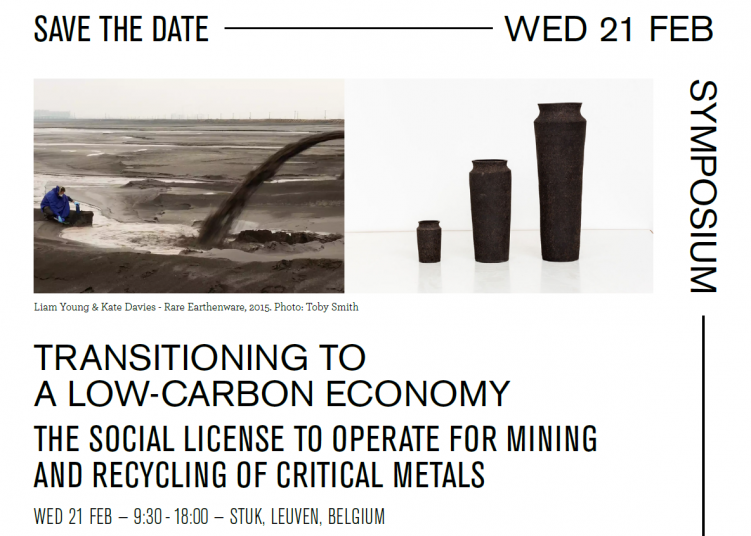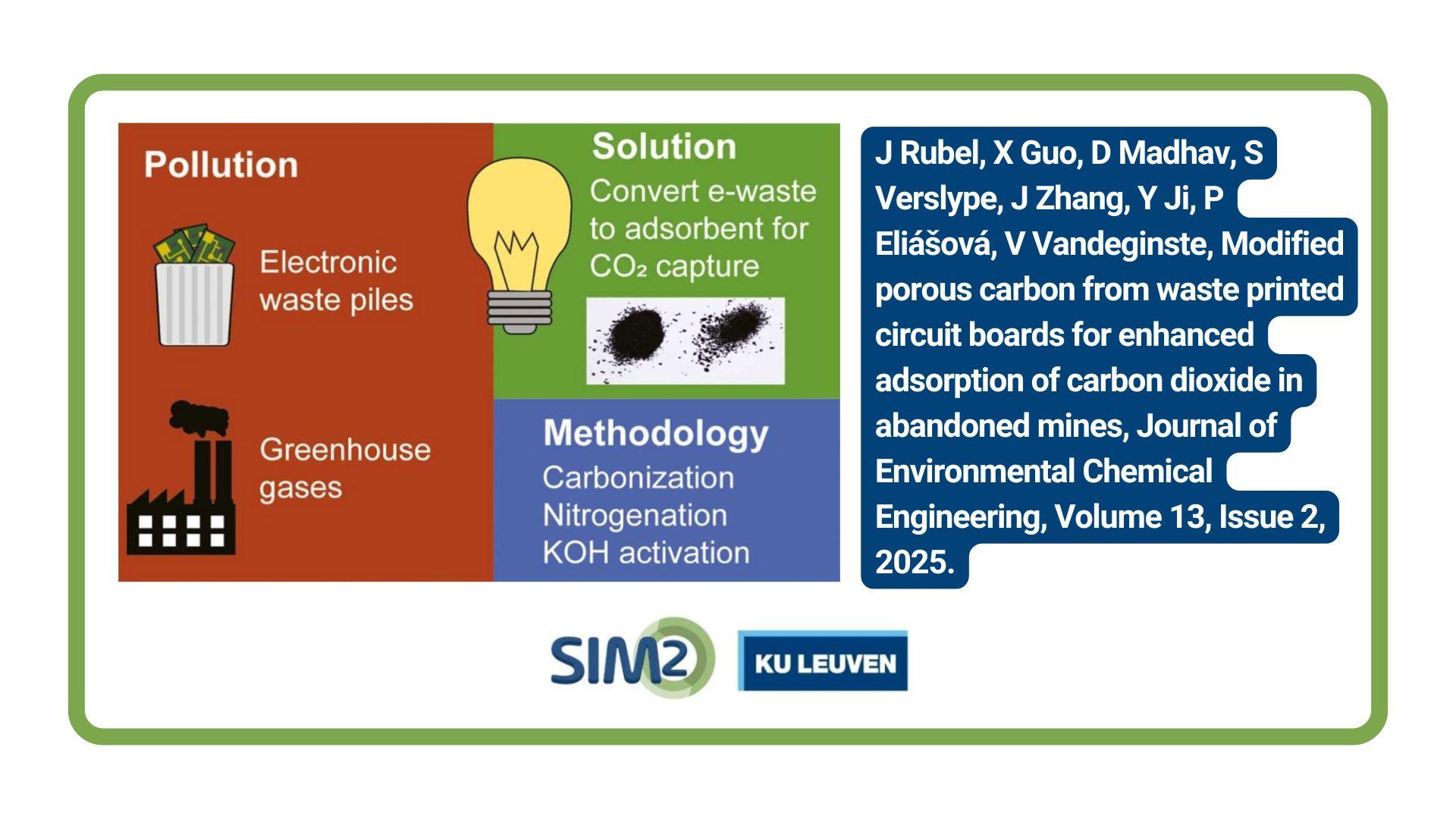Transitioning to a low-carbon economy – the social license to operate for mining and recycling of critical metals – Symposium day in the context of Artefact 2018: This Rare Earth – Stories from Below
As part of “Artefact 2018: This Rare Earth – Stories from Below”, which is the largest arts festival in Flanders, a group of organisations (STUK, SIM² KU Leuven, KU Leuven Dienst Cultuur, i-Cleantech Vlaanderen, STUK, EIT RawMaterials) has joined forces to offer a unique, one-day symposium in Leuven on the Social License to Operate with respect to the primary mining and recycling of critical metals. The Symposium is intended for a diversity of audiences, ranging from civil society, academia, industry and policy makers (max. 300 participants) and will host a variety of national and international speakers. The Symposium will offer the participants the opportunity to also experience the unique, rare-earth related artwork that will be exhibited.
Download Leaflet Symposium Social License to Operate here
Rationale
The rationale for this Symposium is the paradox between the importance of critical metals for the transition to a low-carbon, cleantech-based economy on the one hand and the not-always-so-positive image of the primary mining industry on the other hand. Clean energy and clean mobility for instance require vast amounts of rare earths (neodymium, dysprosium etc.) for the permanent magnets that are needed in wind turbines or electric motors for Hybrid and Electric Vehicles (HEVs). Likewise, energy storage systems and HEVs need even increasing amounts of lithium and cobalt for the Li-ion NMC batteries. Emission control systems require Platinum Group Metals such as platinum, palladium and rhodium. Unfortunately, the mining of these metals does not always happen in the best environmental and/or human rights circumstances. Mining conflicts in China, Congo or Latin-America are widespread. In Europe, where concentrations of critical metals are less outspoken than in other parts of the world, primary mining is often blocked by local activist groups, who don’t want to see industrial mining activities to take place in “their backyard”. Although there can be good reasons for this rejection, this often may also imply that the environmental burden is shifted to other parts in the world, as clean technologies and also hi-tech electronics (e.g. smart phones, laptops etc.) are critically dependent on the mining of these types of critical metals. Some argue that the West behaves hypocritically: European citizens want to enjoy the luxury of hi-tech electronics (e.g. smart phones and electronics) and a multitude of cleantech products (electric bikes and cars, solar panels, clean energy) but don’t want to share in the burden of the primary production of these metals.
This leads us to a number of questions: How can the primary mining sector clean up its act in and outside Europe? Is responsible mining a pipe dream? How can mining companies obtain and maintain a Social License to Operate? Which interaction is required between industry, policy makers, civil society and local communities? Are they any best practice examples? What is the relation between primary mining of critical metals and recycling of End-of-Life products? Can recycling replace primary mining or is it merely complementary to mining? Which policies are required in Europe to support the recycling industry and how does this relate to the Circular Economy vision? Should we look at our industrial landfills in Europe to recover critical metals from previously dumped, critical metal-containing mining waste and industrial process residues (i.e. Enhanced Landfill Mining)? Are local communities supportive for such a strategy? These questions will form the background for a number of keynote lectures and two panel discussions. The Symposium will also offer the participants to have a speed trip allowing to enjoy the unique, rare-earth related art work that will be exhibited.
Programme
With keynotes by a.o. Egbert Lox (Umicore & EIT RawMaterials) and Leida Rijnhout (Friends of the Earth Europe) and panel contributions by a.o. Bart Blanpain (KU Leuven) & Karel Van Acker (EIT RawMaterials). Moderated by Dirk Draulans.
Registration
Registration required — More info soon.
More info on the official leaflet – SaveTheDate_ARTEFACT_Symposium Social License to Operate

Background on Artefact 2018: This Rare Earth – Stories from Below
Artefact is a yearly themed exhibition and festival on contemporary visual arts, current events and societal challenges, organised by STUK, House for Dance, Image and Sound, in Leuven. With its 2,5 week duration (February 13 – March 1, 2018), attracting on average 15,000 visitors, it is the largest of its kind in Flanders. The 2018 edition: This Rare Earth – Stories from Below will focus on the stories told by geological materials; conflict minerals and metals including rare earth elements to begin with. Through recent and newly commissioned work of some 20 international artists, the exhibition will look into the geological, political, economic and ecological implications of their circulation; from mining, processing, and trading, to use, and recycling. The artists involved offer us alternative perspectives on the global political, economic and ecological stories of extraction and trade. For Artefact festival programmes of previous years, please see http://www.artefact-festival.be/en





